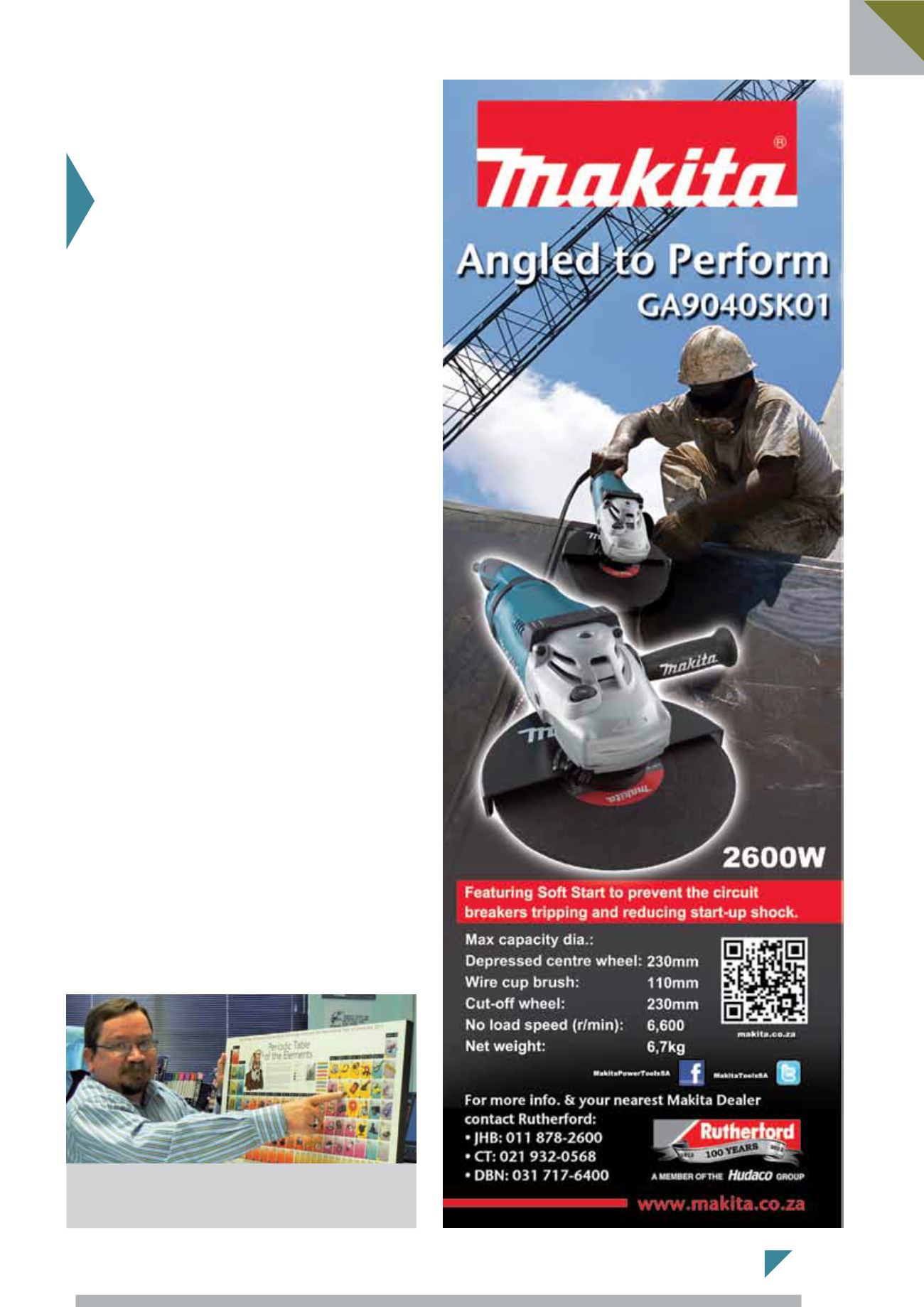
June 2013
CONSTRUCTION WORLD
57
TYPICALLY, THE PRESENCE
of lead in an oil sample comes from the
wear of plain bearing material as it is a metal used in the construction
of such bearings. As lead is quite toxic, there is a move to use‘greener’
materials and the metal, bismuth, fits the bill.
So says John Evans, diagnostic manager for WearCheck, who has
over 30 years’ experience in the oil analysis industry, and currently
heads upWearCheck's team of diagnosticians.
Evans goes on to explain, “For many years ‘white metal’ (plain or
hydrodynamic) bearings have been made of a lead/bronze alloy,
usually containing 10% lead, 10% tin and 80% copper. Typical uses of
such bearing can be found in big end and main bearing applications
in internal combustion engines, and bearings in hydraulic pumps.
“The alloy is very effective as a bearing material and relies on the
fact that lead is insoluble in the copper/tin (bronze) alloy. The lead
forms small pockets in the bronzematrix that deformand smear easily
across the surface of the bearing. This lead coating has very low shear
properties and forms a solid lubricating surface at high speeds. The
soft lead is also good at minimising the effect of abrasive wear and
contamination particles as they become embedded in the lead layer.
“Typically, these bearings would consist of a lead overlay on a
bronze matrix for fatigue resistance with a steel backing for strength.
“As effective as these alloysmay be,”says Evans,“engineers are under
pressure to find alternatives to the use of heavy metals such as lead.
This has been primarily driven by the European Union under a direc-
tive concerning the Restriction of Hazardous Substances. Lead-based
alloys for bearingmaterials are currently exempted from this directive
but the race is on to find an alternative to lead.
“Some success has been found with the metal bismuth replacing
lead in an alloy containing 3% bismuth, 10% tin and 87% copper.
The bismuth is also insoluble in the bronze matrix and operates in
exactly the same way as lead.
“Bismuth is a white crystalline metal with a pinkish tinge and a
melting point of 271 ºC. Like lead it is very dense, but considerably
less toxic. The major producing countries are Peru, Bolivia, Mexico,
Canada and Japan.
“Since introducing the test in its trial phase, the use of bismuth has
been noted in some engine oil samples, usually accompanied by the
absence of lead. The analysis of bismuth will be useful in determining
the presence of abnormal plain bearing wear in engines, and Wear-
Check can now offer this service.
“Interestingly, bismuth naphthenate has also been used to replace
lead naphthenate as an extreme pressure (EP) additive in greases,
and it sometimes shows up in grease analysis and helps to identify the
additive chemistry of the grease,”concludes Evans.
●
Conditionmonitoring specialistsWearCheck recently
became the first oil analysis laboratory in South
Africa to offer the spectrometric determination
of bismuth levels in used lubricating oils.
fuel & oil
Bismuth analysis
John Evans, diagnostic manager for conditionmonitoring specialists WearCheck,
recently confirmed that theirs is the first oil analysis laboratory in South Africa to
determine bismuth levels in used lubricating oils, a development which spells
good news in the long term for 'greener' bearingmaterial.


